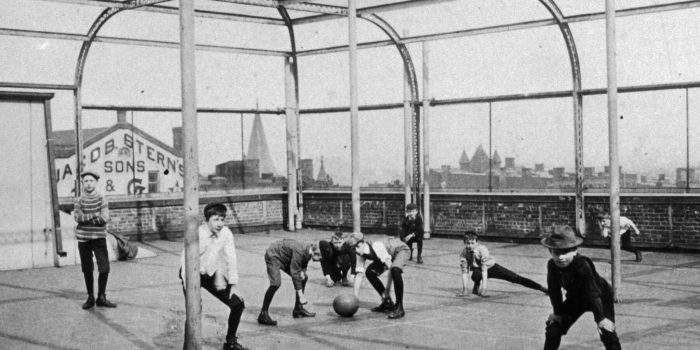Looking back at an awkward moment in the history of adolescent psychology.
A parent could be forgiven for thinking that adolescents are primitive. They speak in monosyllables (“Food!”), if they speak at all. Their cognition can described as dim. (“Where are my shoes!? Oh, they’re on my feet.”) As a group, they seem to be not merely not-yet-mature-humans but not-yet-fully-humans-at-all — Homo habilis maybe, Neanderthals at best.
Take heart in this impression. A century ago, when adolescent psychology first emerged as a field of study, that was exactly the thinking: Teenagers are literally not fully evolved; they are pre-human.
The main proponent of this idea was G. Stanley Hall, a psychologist and educator at Clark University who in 1878 had received, from Harvard, the first doctorate in psychology awarded in the United States. At the time, adolescence was not just a mystery but a nonentity. For centuries leading up to the Industrial Age, young humans went directly from childhood into the work force and reproductive mode. The economy permitted no room for semi-productive adolescents, much less anything like teen culture.
There had been echoes of teen angst. William Shakespeare’s “Romeo and Juliet” appeared in 1597. “The Sorrows of Young Werther,” the 1774 novel by Johann Wolfgang von Goethe, tells the story of a young man who, in pursuit of love, navigates melancholy, euphoria, suicidal ideation and, eventually, unrequited feelings that end in tragedy. The book was part of a late-18th-century German literary movement known as Sturm and Drang, which identified tumult and stress as defining characteristics of impulsive, romantic young people.
Hall, born in Massachusetts in 1844, came of age amid major social and demographic change. With improvements in medicine, sanitation and living conditions, the life span of the average American was increasing, from roughly 40 in 1800 to near 50 by 1900. Progressive reformers sought to combat the ills of industrialization and called for compulsory elementary education; gradually, more working-class families opted for high school, because more learning could lead to better wages.
These forces combined to wedge a new time period between childhood and adulthood. Hall was among the first scholars to try to name and explain it.
“Up until Hall, there was an amorphous general notion that there was this period of life that was different,” said Dr. Laurence Steinberg, a psychologist at Temple University and expert on adolescence. “What Hall did was connect the dots. He was the first person to put it all together.” He added, “He had some ideas that were wacky and some that were brilliant.”













